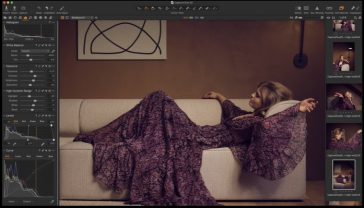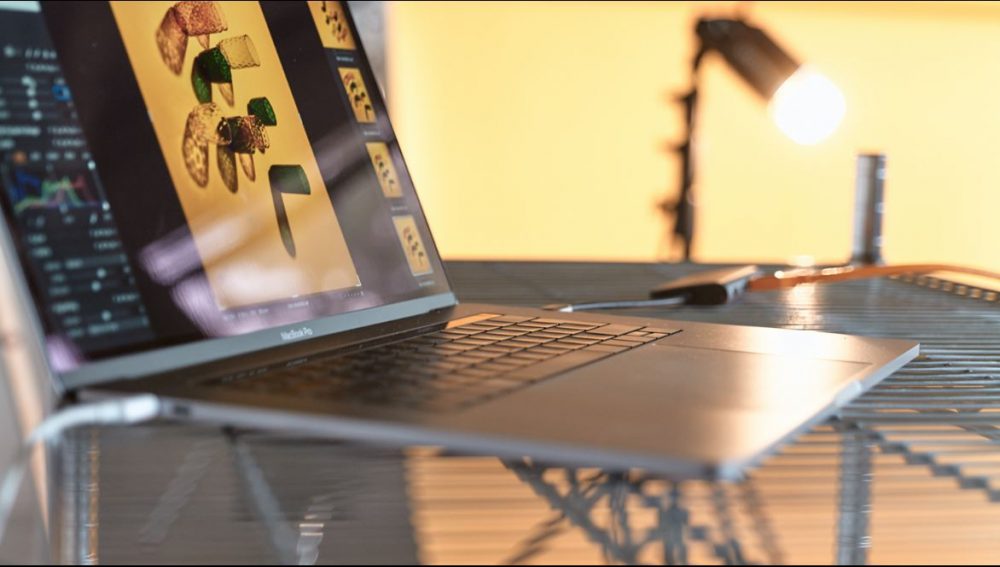
Well, it may not be for everyone, but it certainly is for many. Live View, The Holy Grail Of Tethered Capture Never – Capture One will not display an image until it is selectedĪuto Pause – a feature which will allow you to pause the displaying of images while others are being captured. When Ready – once adjustments have been applied (slight time delay) Immediately – prior to any adjustments being applied
#CAPTURE ONE TETHERING PRO#
This is useful when you’re setting up and don’t want to clutter your HDD.Ĭapture One Pro also gives us additional options here for what happens when a new photo is taken and displayed. In this section, we can enter into Composition Mode, where Capture One overwrites images as they are taken rather than saving each file. The next tethered shooting item I would like to draw your attention to is the “Camera” Menu at the top. I’ve never had use for this feature myself but I’m sure there are many of you who would. It’s worth noting that this will differ depending on the camera you are using and I would advise you to check should this be a must-have feature for you, but, as I mentioned earlier, most modern camera’s will be fine.Īs well as the obvious camera settings, with a supported camera you can go in and adjust pretty much anything you could from within the camera’s menu. From here, you’ll be able to have remote control over many of your cameras settings. This next image shows you the “Camera” and “Camera Settings” menus. By default, certain settings like rotation are not copied using the other methods, “Copy from clipboard” allows you to specify exactly which settings are copied over as well as including the other settings, like rotation. The last setting in that drop down is Copy From Clipboard.


Other settings include:Ĭopy from primary = copy adjustments from a selected imageĬopy specific from last = copy specific adjustments only from last imageĬopy specific from primary = copy specific adjustments only from selected image By choosing “copy from last”, each proceeding image will retain those settings. For instance, you could start the day by applying some rough adjustments once your lighting is set. The Next Capture Adjustments will primarily be used for applying your edits while shooting. I tend to work in ‘sessions’ and use the standard file architecture automatically created, meaning that captured images go to the Capture folder. The interesting parts to note are applying custom naming using a drag and drop system, and choosing the destination of your files. Once in the Capture Menu, the first options concerning tethered capture involve the naming and saving of your files. *Note: this isn’t a comprehensive tutorial on all the operations and ins and outs of Capture One, but their YouTube channel is a great resource for webinars and the likes to bring you up to speed. I know that many of you use Lightroom, a program which I too love, and if you’d like to learn about tethered capture with Lightroom check out Pye explaining tethering in Lightroom here. I’ve also tried Lightroom but found Capture One Pro to be far superior. There’s lots to cover here so I’ll try to keep explanations brief where possible.Ĭapture One Pro is my go to program for tethered capture. In terms of the cable themselves, I would recommend Tether Tools you can find them here.

Length of cable is a tricky one but generally speaking for USB 2.0 the max will be 18ft, with USB 3.0 the max is 9ft, although those lengths can be extended with powered adapters, one of which our Editor-In-Chief, Kish, will be reviewing shortly (TetherBoost Pro). As you may have assumed, the issue here can be that with new cameras, the SDK may not be immediately available.Īs well as a program and supported camera, you will also need a good quality tether cable of an appropriate length. With Capture One, they (and I imagine Lightroom) require the camera manufacturer to provide them with what’s called an SDK (Software Development Kit) In simple terms (the only terms I understand) once they have the SDK and manipulate as required the two programs will then be able to communicate.

Most modern cameras will support tethered shooting but you need to check as it isn’t a guarantee. If you already have Lightroom or Capture One Pro, then you probably have all, if not most of the items you need.
#CAPTURE ONE TETHERING FULL#
Having full / or partial remote control of your camera.Live view and all the benefits that brings.Overlaying text and graphics if shooting for magazines etc.Allows others to also view the images as the shoot is in progress – absolutely key when working with a crew.Applying quick edits or presets as you shoot, giving you an excellent idea of how the finished product will appear.Being able to review the image on a larger screen to check ALL fine details in a way the cameras LCD couldn’t dream of.


 0 kommentar(er)
0 kommentar(er)
